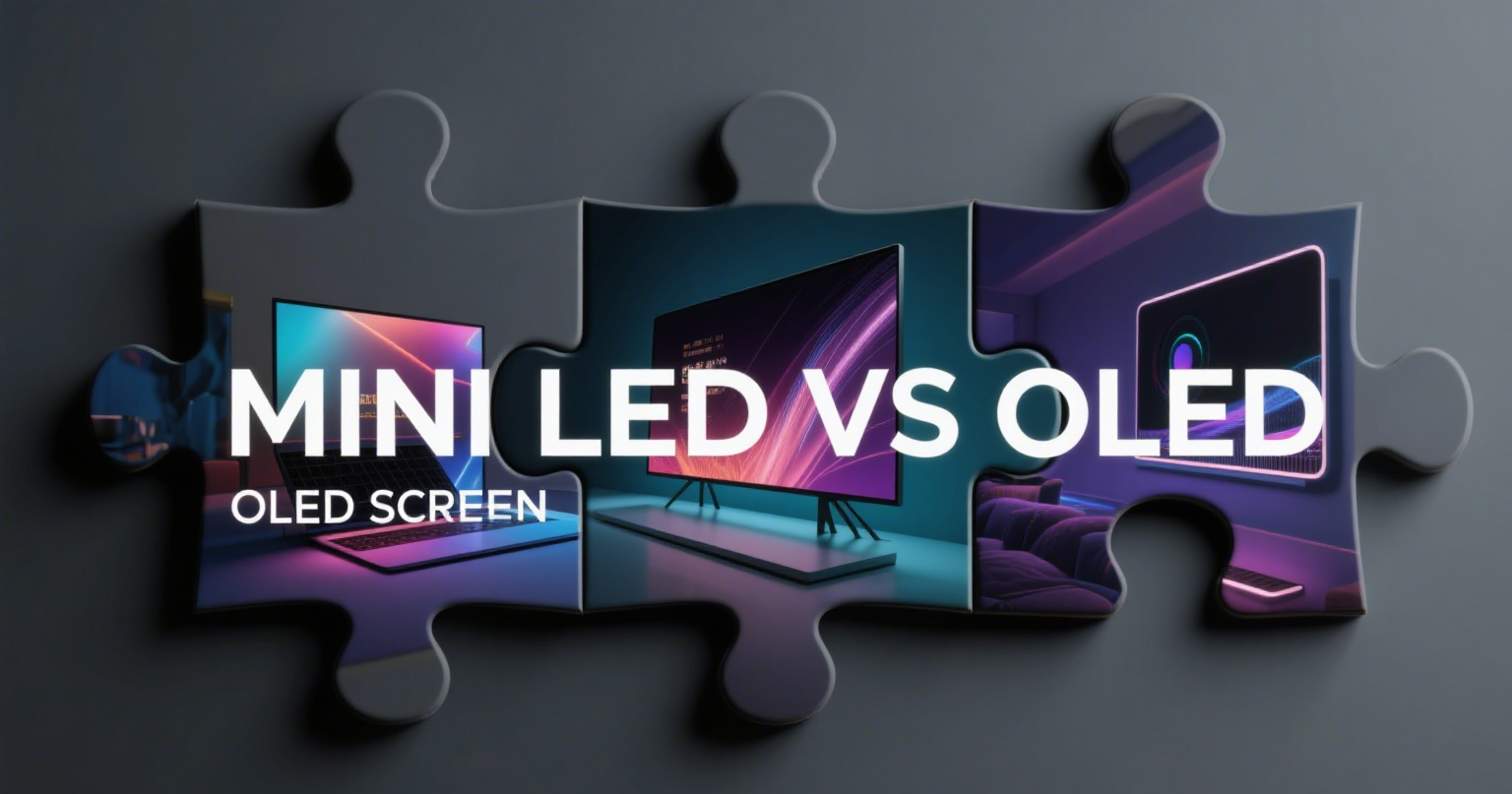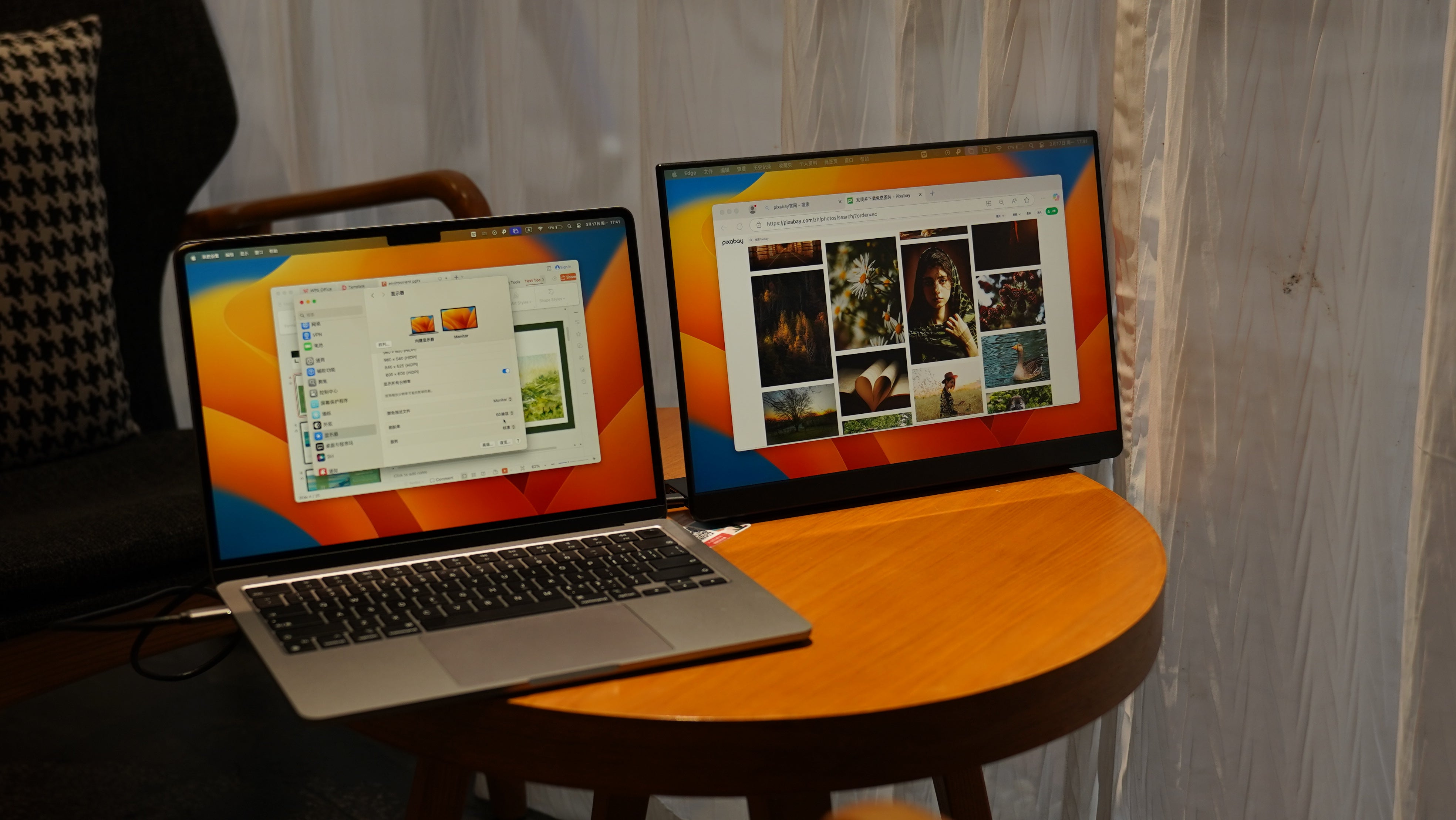The Rise of Hybrid Setups: How Pros Are Blending Office and Remote Work
In recent years, the workplace landscape has undergone a significant transformation, with the hybrid work model emerging as the mainstream trend. This model combines the structure of office work with the flexibility of remote work, such as the well-known "3 days in the office + 2 days remote" model, which is redefining work efficiency, employee satisfaction, and organizational culture. However, this shift is not without challenges, and the emergence of portable screens has provided new ideas and assistance in addressing these challenges.

The Hybrid Work Revolution: A Blend of Flexibility and Structure
The hybrid work model allows employees to allocate their time between the office and remote work locations, typically spending 1 to 3 days a week in the office for collaboration and the rest of the time working remotely to complete key tasks. Some companies have adopted this model, reporting a 30% reduction in employee turnover and a 90% increase in employee satisfaction, due to reduced commuting time and improved work-life balance. When working remotely, portable screens have become a valuable tool for many employees, enabling them to have a multi-screen office experience similar to that in the office in non-traditional workspaces such as home or coffee shops, significantly enhancing the comfort and efficiency of remote work.

Key drivers include the following:
Employee Demand: 95% of employees surveyed indicated that they would like at least one day of remote work per week, citing long commutes and family needs as reasons. The portability and practicality of portable screens meet the needs of employees for efficient work in various remote scenarios, further strengthening their desire for remote work.
Cost Savings: Companies reduce real estate costs by downsizing office space, while employees save on transportation expenses. For employees, portable screens are not only more affordable than traditional desktop monitors but also easy to carry, reducing the cost of equipment purchase and maintenance.
Attracting Talent: The hybrid work model expands the recruitment pool, allowing companies to attract global talent. When companies mention providing equipment support for remote work, including portable screens, to job candidates, it undoubtedly enhances their competitiveness in the talent market and makes global talent more willing to join.

Why Hybrid Work Prevails?
Productivity Boost: Employees use remote workdays for deep work and office workdays for brainstorming, thereby increasing efficiency. When working remotely, portable screens allow employees to open multiple documents, spreadsheets, or software simultaneously without frequently switching windows, significantly enhancing work efficiency. For example, designers can place reference materials on a portable screen and create on the main screen, making the workflow smoother.
Health Benefits: Employees regain the time previously wasted on commuting and use it for fitness, family, or personal projects (for instance, some employees at Qunar lost 8 pounds after implementing this policy). The adjustability of portable screens, such as brightness and angle, reduces visual fatigue from staring at screens for long periods, providing some protection for their health.
Environmental Impact: Reducing the number of commuters lowers the carbon footprint. The production and transportation of portable screens consume less energy and emit less carbon compared to traditional large monitors, contributing to environmental protection to a certain extent.

Challenges and Risks of Hybrid Work
Despite the appeal of hybrid work, it also brings complexity:
Blurred Boundaries: Remote work may lead to the expectation of being "always on," causing pressure for 24/7 availability and unclear issues regarding overtime compensation. However, the portability of portable screens also enables employees to arrange their working hours more flexibly, quickly get into work mode when needed, and easily put them away during breaks, which to some extent, helps to draw a clear line between work and life.
Collaboration gap: Spontaneous office communication has decreased, which may weaken team cohesion and innovation. In remote collaboration, when sharing content during video conferences, portable screens can clearly display files and data, allowing remote employees to better participate in discussions and narrow the collaboration gap.
Legal gray area: Questions have arisen regarding the recognition of work-related injuries caused by working from home and the fair distribution of workloads. If companies provide employees with ergonomic portable screens, it can reduce work-related injuries caused by equipment issues and alleviate the pressure of related legal problems to a certain extent.
Best practices for success
To reduce risks, companies must adopt structured yet adaptable policies:
Clear guidelines: Determine core office days, remote work eligibility based on tasks, and overtime regulations to prevent abuse. At the same time, clearly define the usage norms and maintenance responsibilities for remote work equipment such as portable screens.
Leverage technology for collaboration: Invest in tools such as virtual meeting platforms and project management software to bridge the information gap in remote work. Portable screens, as hardware devices, when used in conjunction with these software tools, can enhance collaboration efficiency. For example, when using project management software, a portable screen can display the project schedule, while the main screen is used for task operations, making everything clear at a glance.
Cultural intentionality: Promote employee connections through virtual social activities ("online water cooler") and mentorship programs. In these activities, employees can enjoy a better visual experience and a greater sense of participation by using portable screens.
Employee protection measures: Ensure the provision of mental health support, ergonomic home office subsidies, and detailed work injury handling plans. Providing portable screen subsidies to encourage employees to use equipment that meets health standards is also an important part of employee protection measures.

Future trends beyond the hybrid work model
Experts predict that the hybrid work model will evolve with the development of artificial intelligence and virtual reality technologies (such as virtual offices), further separating work efficiency from physical presence. Portable screens will also continue to upgrade and may better integrate with these new technologies, such as having stronger compatibility and seamless connection with virtual office devices, providing employees with a more immersive work experience. However, its long-term feasibility depends on finding a balance between flexibility and responsibility - a challenge that requires continuous improvement of policies and tools. As an important tool, portable screens will also continue to play their role in this process.
The hybrid work model is not just a temporary measure during the pandemic but a shift towards a people-centered office environment. By carefully designing, leveraging technology, and showing empathy to address its inherent contradictions, portable screens play a significant role in enhancing the remote work experience and promoting collaboration. Companies can achieve sustainable development and win employee loyalty in the hybrid work era by leveraging these tools.





Leave a comment
This site is protected by hCaptcha and the hCaptcha Privacy Policy and Terms of Service apply.